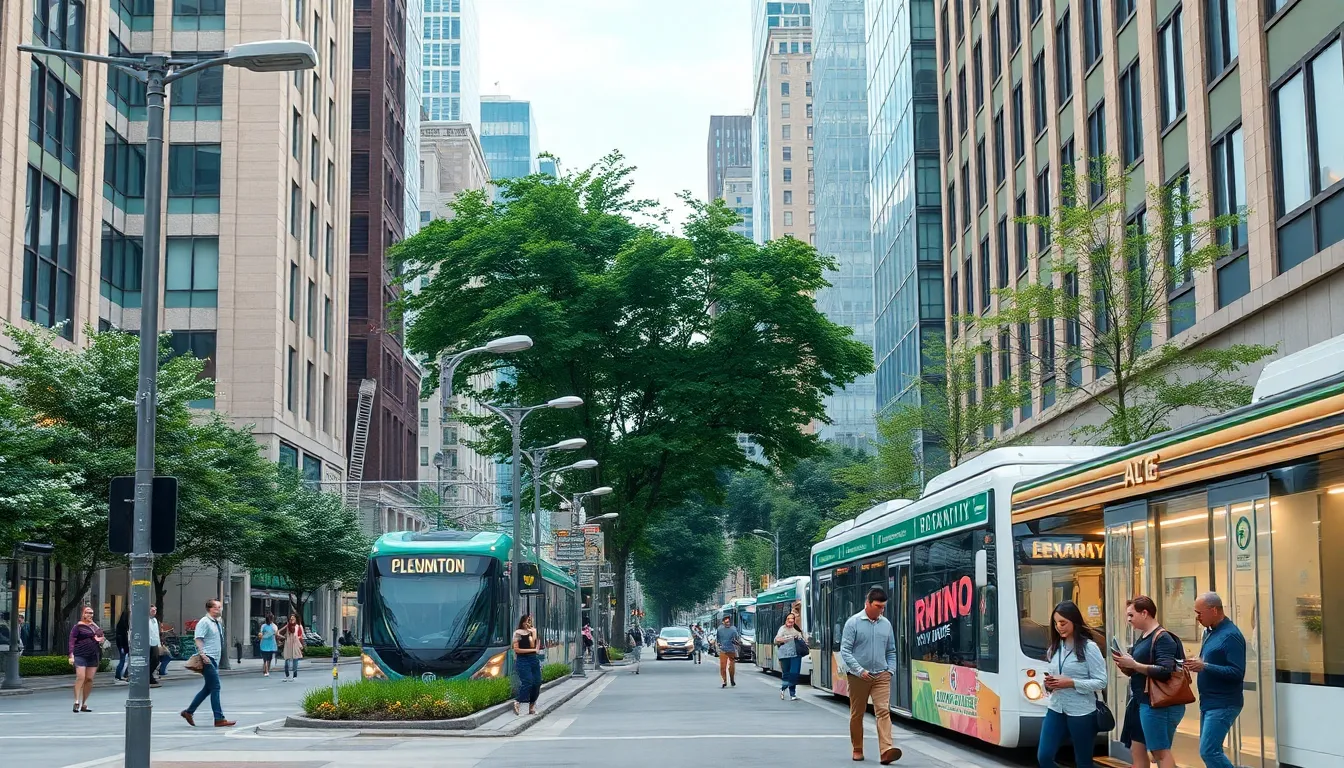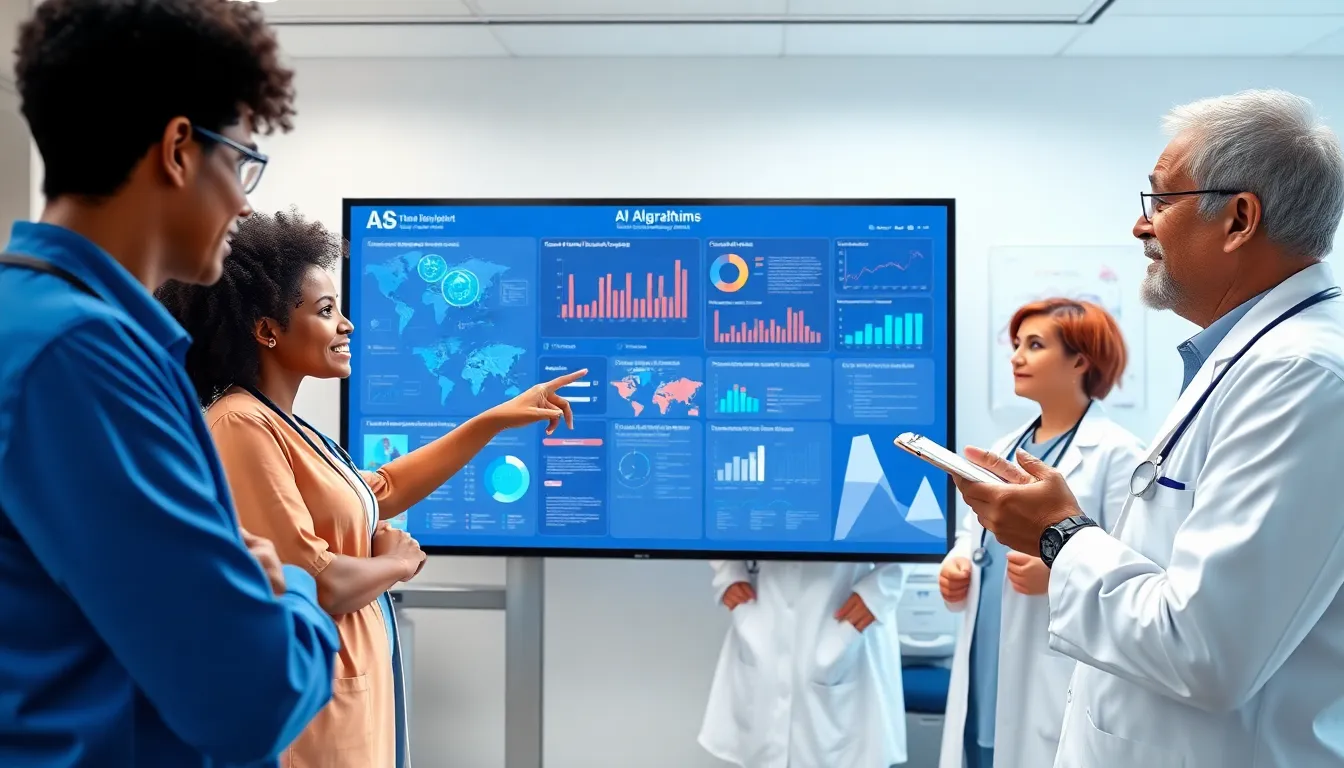Imagine a world where your morning coffee brews itself while your car navigates traffic like a pro. Welcome to the era of smart cities powered by the Internet of Things (IoT). These urban landscapes are transforming into high-tech hubs where everything from streetlights to public transport communicates seamlessly, making life easier and more efficient.
As cities embrace IoT, they’re not just getting smarter; they’re also getting greener and more connected. Think of it as giving a city a brain, one that can optimize resources, reduce waste, and enhance the quality of life for its residents. With a sprinkle of tech magic, smart cities are turning mundane urban experiences into something extraordinary. Get ready to explore how IoT is reshaping our cities and why it’s the future we all deserve.
Table of Contents
ToggleOverview of IoT in Smart Cities
IoT technology fundamentally alters urban landscapes. Cities become interconnected hubs where infrastructure interacts seamlessly. This integration includes elements like smart traffic signals, which enhance traffic flow by adjusting in real-time based on vehicle density.
Smart waste management systems utilize sensors to monitor trash levels, optimizing collection routes and reducing fuel consumption. Public safety improves through smart surveillance systems that use data analytics to detect unusual activities more rapidly. Moreover, air quality sensors provide continuous monitoring, enabling cities to take action against pollution.
Transportation systems benefit from IoT as well. Real-time tracking of public transit vehicles allows commuters to plan their journeys more effectively. Integration of various transport modalities exists within smart city frameworks, promoting sustainable travel options.
Energy management plays a crucial role in smart cities. Smart grids optimize electricity distribution, responding to demand fluctuations immediately. This responsiveness not only conserves energy but fosters a more resilient infrastructure.
Residents access information effortlessly through mobile applications that provide updates on services, events, and local news. Community engagement flourishes as IoT platforms facilitate communication between citizens and city officials, allowing feedback and participation in development projects.
Investment in IoT yields economic benefits through job creation and enhanced efficiency in urban management. Smart cities demonstrate the potential for improving life quality while addressing environmental challenges. As more cities adopt IoT technologies, they pave the way for a sustainable future, creating urban environments that prioritize both innovation and well-being.
Key Components of IoT in Smart Cities

Smart cities rely on several essential components to integrate IoT technology effectively. These components facilitate communication and enhance urban life, providing a framework for sustainable growth.
Sensor Technology
Sensor technology forms the backbone of IoT in smart cities. Devices collect data on temperature, humidity, and air quality, enabling real-time monitoring. Traffic sensors track vehicle movement, optimizing congestion management. Waste sensors signal when bins need emptying, promoting efficient collection routes. Ultimately, this technology empowers cities to make informed decisions, improving resource management.
Data Analytics
Data analytics transforms raw data into actionable insights. Advanced algorithms analyze trends and patterns, assisting city planners in optimizing services. Analytics tools manage traffic flow, predict peak hours, and enhance public transport schedules. Predictive maintenance of infrastructure becomes feasible through data analysis, reducing downtime and costs. Cities benefit from data-driven strategies, fostering improved sustainability.
Communication Networks
Robust communication networks serve as the infrastructure of smart cities. Reliable connections enable seamless data transfer between devices and platforms. Technologies such as 5G enhance speed and capacity, facilitating real-time interactions. Coverage becomes critical; citywide networks ensure all areas benefit from IoT applications. Integrated networks support various IoT elements, creating a cohesive urban ecosystem.
Benefits of IoT in Smart Cities
IoT technology brings multiple advantages to urban environments, enhancing everyday experiences for citizens. It plays a pivotal role in creating smarter, more efficient cities.
Improved Infrastructure
Sensor technology rapidly monitors infrastructure conditions. Smart sensors detect structural issues in bridges and buildings, allowing for prompt repairs and maintenance. Traffic signals adapt to real-time traffic conditions, reducing congestion. Roads equipped with IoT devices provide data that helps city planners optimize routes for vehicles. Lastly, the integration of smart public transport systems leads to more reliable service, further supporting efficient transportation networks.
Enhanced Public Services
Real-time data enhances public safety in smart cities. Surveillance systems, supported by IoT, improve crime monitoring and response times. Waste management relies on smart bins that signal when collection is necessary, streamlining waste disposal. Health services benefit from connected medical devices that enable remote patient monitoring and timely responses. Citizens access essential information through mobile apps, facilitating direct communication with city officials and enhancing community engagement.
Environmental Sustainability
Air quality sensors actively monitor pollution levels. This data provides insights that inform public health initiatives and improve air quality management. Energy consumption benefits significantly from smart grids, which adjust electricity distribution based on demand. Cities utilizing IoT also promote sustainable practices through optimized waste management and resource consumption. Sustainable transportation options, such as electric vehicle charging stations and bike-sharing programs, further contribute to environmental goals.
Challenges of Implementing IoT in Smart Cities
Implementing IoT in smart cities presents several challenges that require careful consideration and strategic planning.
Data Privacy and Security
Data privacy concerns dominate discussions surrounding IoT in smart cities. Sensitive information collected by sensors and devices can be vulnerable to cyberattacks. Securing this data becomes essential to maintain residents’ trust. Authentication protocols and encryption methods play critical roles in safeguarding information. Municipalities must comply with regulations, such as the General Data Protection Regulation (GDPR), which dictate how personal data is stored and processed. Engaging in robust security measures ensures data integrity, protecting citizens from potential breaches.
Integration with Existing Systems
Integrating IoT solutions with existing infrastructure poses significant challenges. Legacy systems may not support new technologies, complicating implementation. Designing compatible interfaces allows for seamless data exchange between old and new systems. Coordination among various stakeholders, such as city officials, technology providers, and residents, proves vital in establishing an effective IoT ecosystem. Successful integration enhances operational efficiency and maximizes the benefits of smart technologies, addressing the diverse needs of urban environments.
Cost and Funding Issues
Funding IoT initiatives in smart cities presents financial challenges. High initial investment costs discourage many municipalities from adopting these technologies. Identifying sustainable funding sources becomes crucial for long-term success. Public-private partnerships often offer additional financial resources and expertise. Budget constraints may limit the scope of IoT projects, preventing cities from realizing their full potential. Assessing cost-effectiveness and prioritizing investments can enhance the chances of successful implementation, ensuring cities transition toward smarter solutions.
Future Trends in IoT for Smart Cities
Future advancements in IoT for smart cities focus on enhancing connectivity and efficiency through emerging technologies.
AI and Machine Learning Integration
AI and machine learning play critical roles in processing vast amounts of data generated by IoT devices. These technologies enable real-time analysis, leading to more informed decision-making. Algorithms improve traffic management systems by predicting congestion patterns. Predictive maintenance for urban infrastructure also benefits from AI, allowing for timely repairs before failures occur. Furthermore, machine learning enhances security through anomaly detection in surveillance data. This integration promotes smarter resource allocation across city services.
Edge Computing
Edge computing significantly enhances the efficiency of IoT systems in smart cities. By processing data closer to the source, it reduces latency and optimizes bandwidth usage. Smart sensors and devices can analyze data on-site, allowing for immediate responses, such as adjusting traffic signals based on current conditions. Improved response times also contribute to public safety, where timely alerts can avert incidents. As urban areas expand, edge computing scales effectively, providing reliable connectivity. The strategy minimizes reliance on centralized data centers, resulting in a more resilient infrastructure.
Conclusion
The integration of IoT in smart cities is transforming urban living, making it more efficient and sustainable. By leveraging advanced technologies, cities can optimize resources and enhance the quality of life for residents. As IoT continues to evolve, the potential for improved public services and environmental sustainability grows significantly.
However, challenges such as data privacy, security, and integration with existing systems must be addressed. Investment in IoT not only fosters job creation but also drives innovation in urban management. As cities embrace these advancements, they pave the way for a smarter and greener future, ensuring a better living environment for generations to come.





